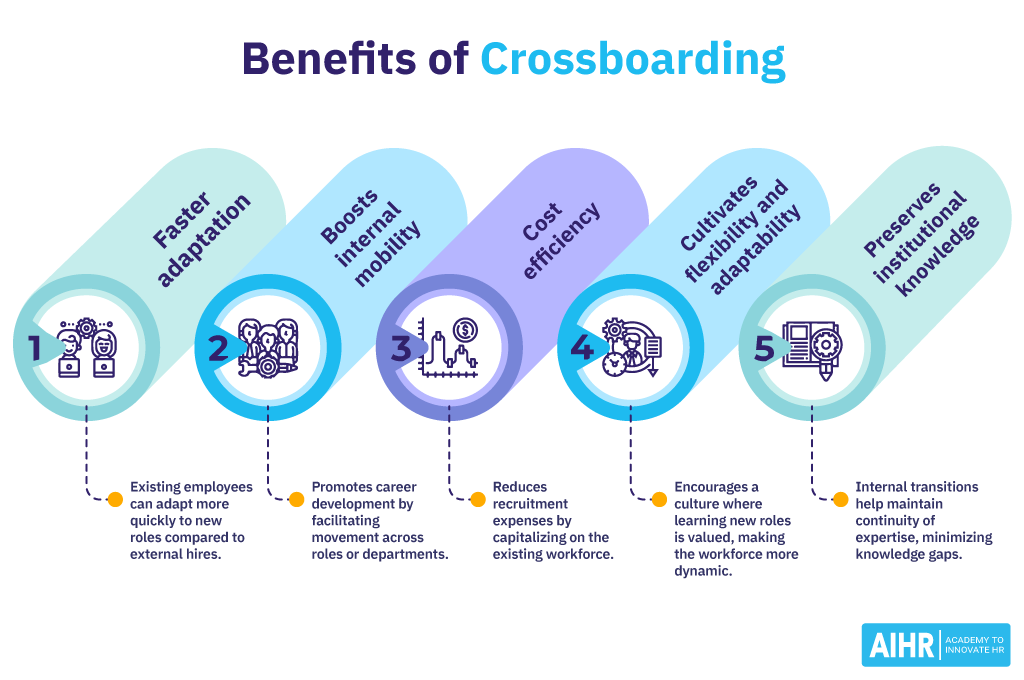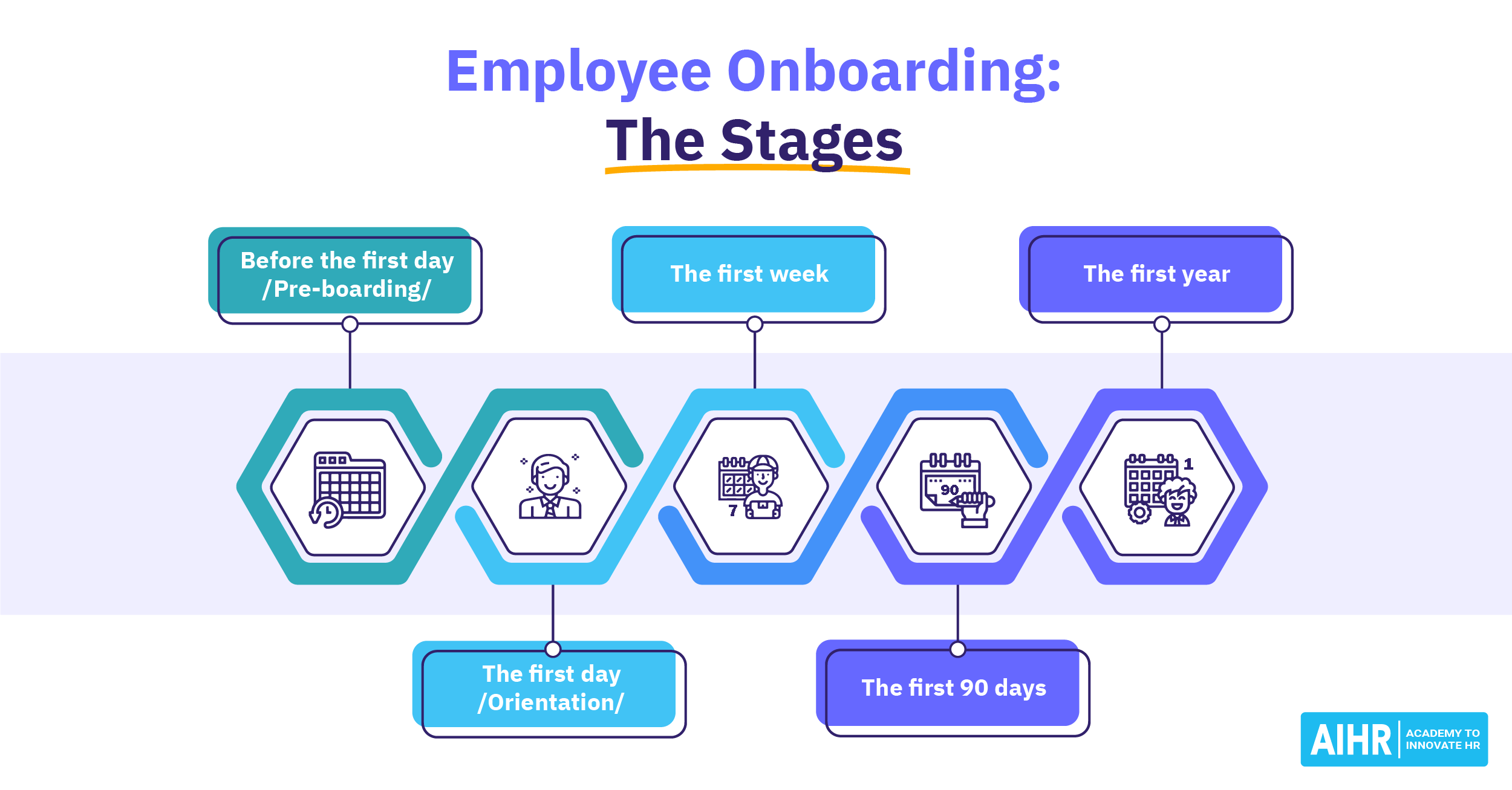Crossboarding
What is crossboarding?
Crossboarding refers to the process of transitioning existing employees within an organization to new roles, departments, or responsibilities. Unlike onboarding, which focuses on acclimating new hires to the company, crossboarding is designed for current employees who are moving internally, whether through promotion, departmental shifts, or to fill newly created positions.
It encompasses re-orientation, re-skilling, and re-assimilation into their new role while maintaining their existing organizational knowledge and networks.
Crossboarding vs. onboarding: Key differences
Definition
The process of integrating a new employee into an organization.
The process of helping an existing employee transition to a new role within the same organization.
Objective
To acclimate new employees to the company culture, policies, and their specific job responsibilities.
To assist existing employees in adapting to a new role or department, often involving learning new skills or expanding their knowledge.
Duration
Typically occurs during the first few weeks to months of employment.
May be shorter than onboarding, as the employee is already familiar with the company.
Focus areas
Company policies, procedures, culture, and role-specific training.
Role-specific training, new responsibilities, and possibly new team dynamics.
Key activities
Onboarding checklists, introductory training sessions, mentorship programs, company culture introduction, and HR software for managing paperwork and compliance.
Role-specific training programs, mentorship from within the new department, regular feedback sessions, and career development planning.
Benefits of crossboarding
Here are some of the key advantages of crossboarding:
- Improves internal mobility: Crossboarding facilitates the seamless movement of employees across different roles or departments, enhancing career development opportunities within the organization.
- Faster time to productivity: Employees transitioning to new roles through crossboarding are likely to reach full productivity faster than new hires. They are already familiar with the company’s culture, processes, and people, which shortens the learning curve.
- Cost efficiency: Crossboarding is a more cost-effective alternative to external hiring. The costs associated with upskilling an existing employee for a new role are significantly lower than those incurred from recruiting, hiring, and onboarding a new employee from outside the company.
- Retains institutional knowledge: By moving employees internally, organizations can retain critical institutional knowledge and expertise, avoiding the knowledge gap that can occur with new hires.

Examples of crossboarding
Crossboarding can manifest in various forms depending on the nature of the transition, the company’s size, and its culture. Here are several examples illustrating how it might be effectively implemented across different scenarios:
- Promotion to a leadership role: An employee who has been promoted to a management position may benefit from crossboarding programs that include leadership training, mentorship from a senior leader, and workshops on effective communication and team management.
- Transition to a different department: When an employee moves to a completely different department, crossboarding could involve a comprehensive introduction to the new department’s goals, workflows, and key projects.
- Taking on new responsibilities: For an employee tasked with new responsibilities within their current role, crossboarding could focus on upskilling. This might involve online courses, attending industry conferences, or internal training sessions.
- Adapting to organizational restructuring: In organizational restructuring, where roles and team dynamics may shift, crossboarding can help employees understand their new positions within the company. This might include information sessions about the restructuring process, one-on-one meetings to discuss new career paths, and team-building activities to foster new relationships.
How HR can create an effective crossboarding process in 6 steps
Creating an effective crossboarding process is crucial for retaining talent and ensuring employees transition smoothly into new roles within the same organization. Here’s a step-by-step guide:
- Identify internal talent opportunities: Regularly assess the workforce to identify employees with the potential and desire to transition into new roles, aligning with both business needs and individual career aspirations.
- Design targeted training and development programs: Develop customized training sessions focused on the specific skills and knowledge required in the new role, ensuring a smooth transition and immediate productivity.
- Implement mentorship or buddy systems: Pair transitioning employees with mentors in their new department or role to provide guidance, support, and insight into the nuances of their new responsibilities.
- Provide a clear transition plan: Outline specific steps, timelines, and expectations for the transition period, including how and when responsibilities will shift, to ensure clarity and reduce anxiety for both the employee and their new team.
- Offer ongoing support: Schedule regular check-ins with the employee to discuss their adjustment, address any challenges, and offer continued support.
- Evaluate the crossboarding process: After the transition, collect feedback from the employee, their new supervisor, and other stakeholders to assess the effectiveness of the crossboarding process. Use this feedback to improve the program for future transitions.
HR tip
For a successful crossboarding program, tailor the process to each employee’s unique needs and career background. This personalized approach ensures they receive relevant training, mentorship, and resources, facilitating a smoother transition into their new role and maximizing their potential for success within the organization.







